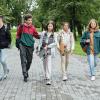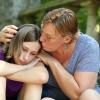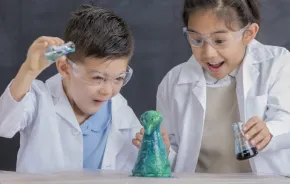Photo:
Seattle Public School students march in November | Photo credit: Barnaby Woods
On Nov. 14, an estimated 10,000 Seattle Public School (SPS) students walked out of class to protest the results of the 2016 presidential election results, according to a Jan. 13 SPS press release. Students in six other local districts — Shoreline, Bellevue, Lake Washington, Tukwila, Edmonds and Vashon Island — also joined the national wave of protests. Meanwhile, many students remained in class, unsure both of what the protest could accomplish and what repercussions they might face if they joined in.
The one thing both groups had in common? They, minors under the age of 18, had no say in the election. For some, the Nov. 14 walkout was an opportunity to have that say.
“We wanted to make the point clear that we are here to care for each other, that we stand with all of the groups who could be affected by a Drumpf presidency,” says Barnaby Woods, a senior and associated student government (ASG) vice president at Garfield High School who participated in the walkout. “We tried to create an atmosphere of respect and to make people comfortable, whether they chose to walk out or stay in class.”
Woods ran for student government to be more involved at his school, but serving on the student government’s Social Equality Committee raised his political awareness of broader issues. “It helped me understand the complex nature of oppression in America,” Woods says. When ASG members started receiving Snapchats from fellow students the day after the election calling for a walkout, they responded quickly.
“One of the great things about our generation is our use of social media,” Woods says. Like protestors around the world, local teens utilized multiple social media channels to organize the event almost in real time. With two hours left in the school day, hundreds of Garfield students left campus carrying homemade signs and marched to join a larger demonstration, which was composed mostly of other Seattle-area students, at Cal Anderson Park.
Serious issues, serious students
The stereotype that youth don’t understand real-world problems is often untrue. Just ask Jesse Hagopian, history teacher and Black Student Union (BSU) advisor at Garfield.
“African-American students in Seattle are four times as likely to be expelled as white students for the same offenses,” he says. “Students face myriad challenges: unstable home conditions, institutions designed to limit their voice, lack of access to resources. We have 150 homeless students at Garfield — in the middle of one of the richest communities in the history of humanity.”
Last semester, Hagopian helped organize Seattle Public Schools’ Black Lives Matter Day and in November, witnessed first-hand when many Garfield students walked out.
“The posters they walked out with were really moving,” he says of the walkout. “It’s beautiful to see the outpouring of support for groups that are being targeted.”
Kaya Nieves is a sophomore at Bellevue’s Newport High School. She joined the BSU at the beginning of the school year when the BSU president invited her to a meeting.
Nieves says that the Asian and white majority at her school — only 2 percent of Newport’s student population is black — is not fully aware of the racism that some students face daily. After a recent incident drew attention to inequities at the school, the BSU organized an after-school forum for teachers and students where they discussed how students at Newport experience race and privilege in an attempt to encourage classmates to examine their own attitudes.
“If feels really good to be with a group of people who can relate to what I’m going through,” Nieves says of her work with the BSU. “BSU is a safe environment for people who have less of a voice in the community.”

Beyond school
Sometimes, student activism happens outside the classroom, too. For Long Tran, it happened when he picked up a video camera during his junior year in high school.
“Watching my favorite movies, I didn’t see a lot of people who looked like me,” Tran says. “I found my purpose; in my personal projects, I try to make documentaries and share the Asian-American voice.”
Now a sophomore majoring in communications at the University of Washington, Tran works as a freelance videographer. He recently submitted a documentary about Asian-American artists to an HBO competition and travels to film festivals to present his best-known work, the award-winning short documentary Trapped, which he filmed during his senior year of high school about a local transgender teen.
Rachelle Henry, a sophomore at Washington Virtual Academy, was also inspired to action through film. “I don’t always do social message pieces, but when I come across one it really pulls me in,” she says.
Henry, who has worked in film since she was 6, won a PITCH grant last year to produce a project about social change. Working with PAWS and Emerald City Pet Rescue, she learned about animal testing. The resulting film, Missing, won international awards. She has since performed in Crease, a short film questioning cosmetic eyelid surgery. When she is not filming, she returns to Emerald City Pet Rescue to photograph adoptable animals for their website.
What can youth do?
Get training. Youth can read the FreeChild Project’s Youth Action Tool Guide or attend one of their workshops; go to Freedom School or Camp Congress for Girls.
How adults can help
Often, young people face additional challenges that make it harder for them to be politically engaged. That’s where adults come in.
“Adults don’t always take youth seriously, and sometimes these same adults are the gatekeepers,” says Brandon Knox, volunteer and outreach coordinator at LGBTQ youth support organization Lambert House.
“Youth lack a lot of control in their lives, and may not even be able to determine what they do with their time,” Knox continues. “They don’t always have transportation, and for LGBT youth specifically, they may not be able to be out to their families."
After the shooting in Orlando last year, for example, Lambert House organized political action trainings in response to requests from youth who wanted to learn how to be more politically involved.
Simply by taking teens seriously and respecting their views, even when parents disagree with them, parents can support their teens’ community engagement. “What I’ve learned is don’t let people shut you down,” says Tran. “You have to continue when you really care about something.”
Falen Wilkes can relate. Wilkes attended her first political rally at the age of 12 and hasn’t stopped since.
“The first time I lobbied, I was 14 and speaking to my representatives about the Reproductive Parity Act (RPA),” says Wilkes, now a freshman at Seattle University. “One of my representatives … ended up being the only Republican in the Washington State House to vote yes on the RPA. I saw him later and he actually credited me with convincing him to vote yes.”
The experience, she says, taught her an important lesson. “I realized my voice could make a difference,” she says. “Young people’s voices can make an impact if they use them, if they are told they can be heard.”











